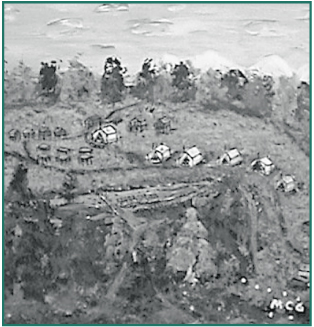|
STATE STANDARDS
Science:
A. A student should understand scientific facts, concepts, principles,
and theories.
B. A student should be able to apply scientific knowledge and skills
to make reasoned decisions about the use of science and scientific
innovations.
Geography:
A. A student should be able to make and use maps, globes, and graphs
to gather, analyze, and report spatial (geographic) information.
B. A student should be able to utilize, analyze, and explain information
about the human and physical features of places and regions.
E. A student should understand and be able to evaluate how humans
and physical environments interact.
Mathematics
A. A student should understand mathematical facts, concepts, principles,
and theories.
B. A student should understand and be able to select and use a variety
of problem-solving strategies.
F. A student should be able to apply mathematical concepts and processes
to situations within and outside of school.
CULTURAL STANDARDS
A. Culturally knowledgeable students are well grounded in the cultural
heritage and traditions of their community.
B. Culturally knowledgeable students are able to actively participate
in various cultural environments.
C. Culturally knowledgeable students are able to engage effectively
in learning activities that are based on traditional ways of knowing
and learning.
D. Culturally knowledgeable students are able to willingly give volunteer
service for the betterment of their Village/community.
|
Mapping the Village
Environmental Wastes and Hazards

"Putting Up Salmon At Batzulnetas" a
painting by Molly John Galbreath
|
OBJECTIVES
Students will:
- work with the Tribal Council to locate and investigate
any environmental wastes or hazards located within
the Village area.
- give oral descriptions of where these certain
places are within their region.
- draw a precise map to scale using standard measurements
of the hazard/waste areas.
- convert standard measurements to metric.
- distinguish the difference between human and animal
waste.
- define waste (garbage) and become aware of what
happens to it after disposal.
|
|